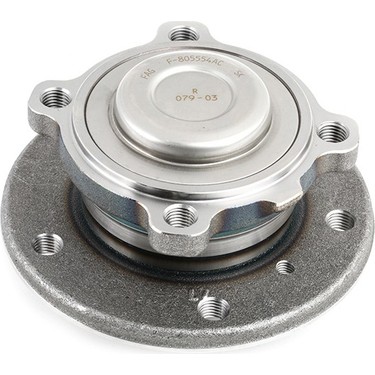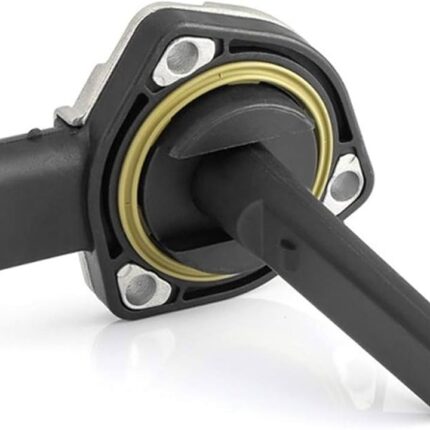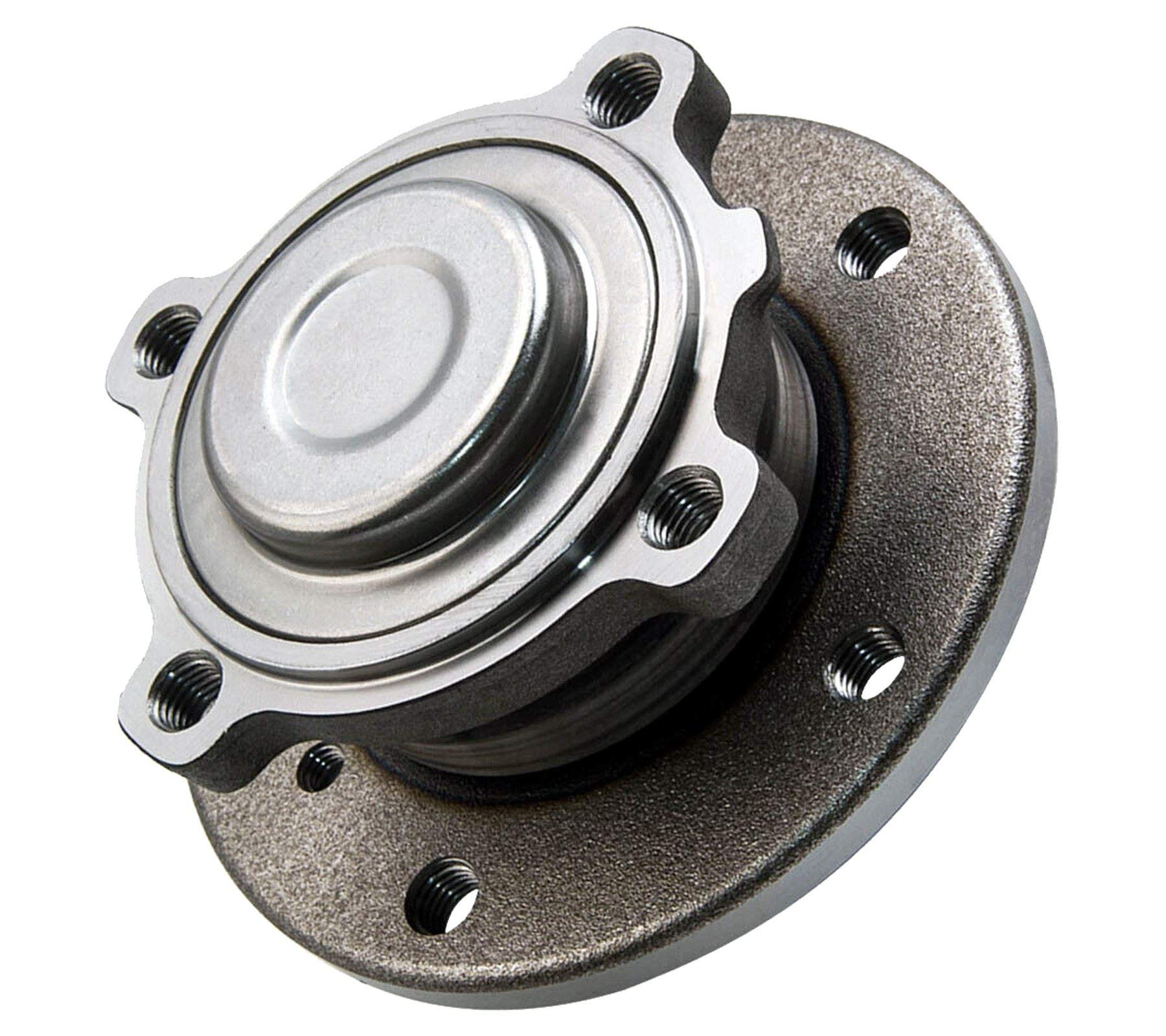-5%
Get BMW E92 328i N52 3.0L Front Wheel Hub Bearing 31216765157 in Kenya
The front wheel hub bearing is a critical component of a vehicle’s suspension and steering systems. It ensures the smooth rotation of the wheels while supporting the vehicle’s weight. Despite being a small part, its role is crucial for maintaining safety, performance, and driving comfort. In this guide, we will explore the construction, function, importance, signs of failure, maintenance tips, and replacement process of the front wheel hub bearing.
What is a Front Wheel Hub Bearing?
A front wheel hub bearing is a set of steel balls (or rollers) enclosed in a metal ring, also known as a race. It is integrated into the hub assembly, which connects the wheel to the suspension. This bearing allows the wheel to rotate with minimal friction while handling forces such as weight, acceleration, and braking.
There are two main types of wheel bearings:
- Ball Bearings: Common in many vehicles due to their versatility and ability to handle radial and thrust loads.
- Roller Bearings: Designed for vehicles requiring greater durability, such as trucks or SUVs.
Components of a Front Wheel Hub Bearing
A front wheel hub bearing assembly typically consists of:
- Outer Ring (Race):
- The outer structure that houses the bearing and provides support.
- Inner Ring:
- Attached to the axle, it allows the wheel to rotate.
- Bearings (Balls or Rollers):
- These enable smooth rotation by reducing friction.
- Seal:
- Prevents dirt, moisture, and debris from entering the bearing assembly and protects the lubricant inside.
- Flange:
- Connects the bearing assembly to the wheel and brake rotor.
- ABS Sensor Ring (in some models):
- Works with the anti-lock braking system (ABS) to monitor wheel speed.
Functions of the Front Wheel Hub Bearing
The front wheel hub bearing performs several essential functions:
- Facilitates Wheel Rotation:
- Ensures the wheels rotate smoothly and efficiently with minimal resistance.
- Supports Vehicle Weight:
- Bears the entire weight of the vehicle, including passengers and cargo.
- Maintains Steering Precision:
- Contributes to accurate and responsive steering by keeping the wheel securely attached to the suspension.
- Reduces Friction:
- Minimizes friction between the rotating wheel and the stationary axle, improving efficiency and durability.
- Enhances Safety:
- Provides stability during braking, cornering, and high-speed driving.
Importance of the Front Wheel Hub Bearing
- Driving Comfort:
- A well-functioning bearing reduces noise and vibration, ensuring a smooth and quiet ride.
- Fuel Efficiency:
- Reduced friction translates to better fuel economy.
- Prolonged Tire Life:
- Proper alignment and rotation prevent uneven tire wear.
- Enhanced Handling:
- Maintains stability and control, especially during turns and emergency maneuvers.
- Prevents Catastrophic Failures:
- A damaged bearing can lead to wheel detachment, making regular maintenance vital for safety.
Signs of a Failing Front Wheel Hub Bearing
A failing front wheel hub bearing often exhibits noticeable symptoms. Recognizing these early signs can help prevent further damage:
- Unusual Noises:
- A humming, grinding, or roaring noise from the wheel area, especially when turning.
- Vibration:
- Steering wheel or vehicle vibrations during driving.
- Uneven Tire Wear:
- Irregular wear patterns on the front tires due to poor alignment.
- ABS Warning Light:
- In vehicles with ABS, a failing bearing can trigger the warning light.
- Wheel Play:
- Excessive movement or looseness when the wheel is rocked back and forth.
- Pulling to One Side:
- Vehicle veering to one side while driving or braking.
Common Causes of Front Wheel Hub Bearing Failure
- Wear and Tear:
- Bearings wear out over time due to constant use and exposure to forces.
- Improper Installation:
- Incorrect fitting or overtightening during installation can lead to premature failure.
- Lack of Lubrication:
- Insufficient or contaminated lubricant increases friction and accelerates wear.
- Road Conditions:
- Driving on rough roads, potholes, or off-road terrain puts extra stress on the bearings.
- Exposure to Moisture and Dirt:
- Water and debris can penetrate damaged seals, leading to corrosion and contamination.
- Overloading:
- Carrying excessive weight strains the bearing and reduces its lifespan.
Maintenance Tips for Front Wheel Hub Bearings
- Inspect Regularly:
- Check the bearings during routine vehicle maintenance or tire changes.
- Monitor Tire Condition:
- Uneven tire wear could indicate bearing issues.
- Replace Damaged Seals:
- Ensure the seals are intact to prevent contaminants from entering.
- Avoid Overloading:
- Adhere to the manufacturer’s weight limits for your vehicle.
- Drive Cautiously:
- Avoid rough terrain and potholes whenever possible.
- Use High-Quality Parts:
- Opt for OEM or high-quality aftermarket bearings during replacement.
Steps to Replace a Front Wheel Hub Bearing
Replacing a front wheel hub bearing is a technical process that requires specific tools and expertise. Below is a general outline:
- Prepare the Vehicle:
- Park on a flat surface, engage the parking brake, and loosen the lug nuts.
- Raise the Vehicle:
- Use a jack to lift the vehicle and secure it with jack stands.
- Remove the Wheel:
- Take off the wheel to access the hub assembly.
- Detach Brake Components:
- Remove the brake caliper, pads, and rotor.
- Disconnect the Hub Assembly:
- Detach the axle nut and bolts securing the hub assembly to the suspension.
- Extract the Bearing:
- Use a bearing puller or press to remove the old bearing.
- Install the New Bearing:
- Press the new bearing into place, ensuring proper alignment.
- Reassemble Components:
- Reattach the hub assembly, brake components, and wheel.
- Test Drive:
- Check for any unusual noises or vibrations to confirm a successful installation.
High-Performance Front Wheel Hub Bearings
For performance enthusiasts or vehicles operating in extreme conditions, high-performance bearings offer:
- Enhanced Durability:
- Made from superior materials to withstand higher loads and temperatures.
- Improved Seals:
- Advanced seals provide better protection against contaminants.
- Reduced Friction:
- Precision engineering minimizes friction for smoother operation.
Cost of Front Wheel Hub Bearing Replacement
The cost of replacing a front wheel hub bearing depends on factors like the vehicle make and model, labor rates, and part quality. On average:
- Part Cost: $50 to $200 for a single bearing.
- Labor Cost: $150 to $300, depending on the complexity of the job.
Conclusion
The front wheel hub bearing is a small yet essential component that plays a pivotal role in vehicle performance and safety. Regular inspection, timely maintenance, and quality replacements ensure smooth and trouble-free driving. By understanding its importance and addressing issues promptly, you can enhance your vehicle’s longevity, safety, and overall driving experience.
Follow us on Facebook for more parts.




Reviews
Clear filtersThere are no reviews yet.